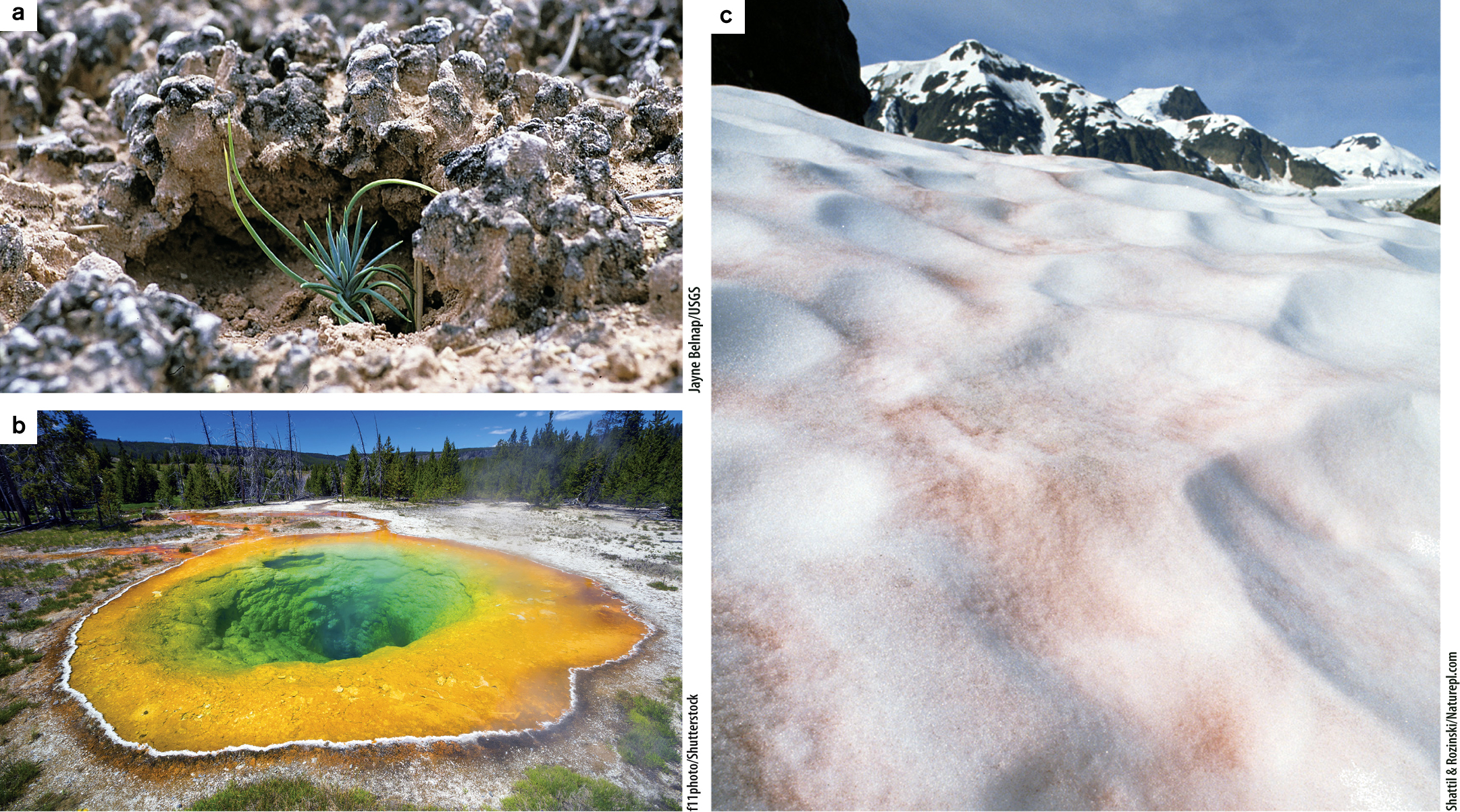Photosynthesis is widely distributed.
The photosynthesis that is most evident to us is carried out by plants on land. Trees, grasses, and shrubs are all examples of photosynthetic organisms. However, photosynthesis occurs among prokaryotic as well as eukaryotic organisms, on land as well as in the sea. Approximately 60% of global photosynthesis is carried out by terrestrial organisms, with the remaining 40% taking place in the ocean. The majority of photosynthetic organisms in marine environments are unicellular. About half of oceanic photosynthesis is carried out by single-
Photosynthesis takes place almost everywhere sunlight is available to serve as a source of energy. In the ocean, photosynthesis occurs in the surface layer extending to about 100 m deep, called the photic zone, through which enough sunlight penetrates to enable photosynthesis. On land, photosynthesis occurs most readily in environments that are both moist and warm. Tropical rain forests have high photosynthetic productivity, as do grasslands and forests in the temperate zone. However, photosynthetic organisms have evolved adaptations that allow them to tolerate a wide range of environmental conditions, like those illustrated in Fig. 8.1. In very dry regions, a combination of photosynthetic bacteria and unicellular algae forms an easily disturbed layer on the surface of the soil known as desert crust. Photosynthetic bacteria are also found in the hot springs of Yellowstone National Park at temperatures up to 75˚C. At the other extreme, unicellular algae can grow on the surfaces of glaciers, causing the surface of the snow to appear red. In section 8.4, we discuss why photosynthetic organisms growing in such extreme environments often appear red or yellow rather than green.
